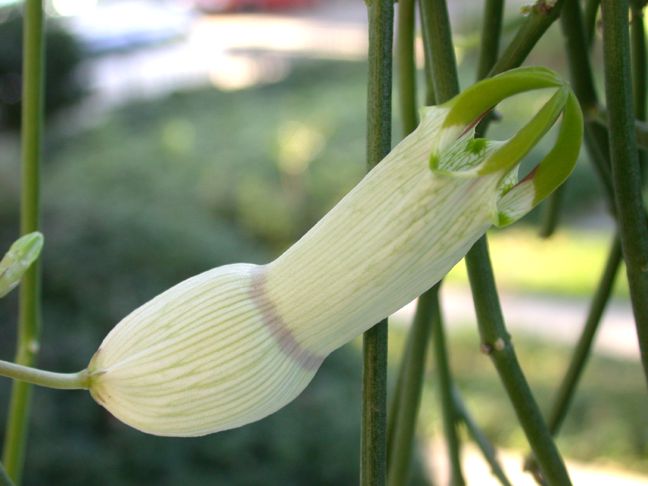
This plant is native to South Africa: Transvaal, Natal, and the Cape province. It has been known since 1837.
This plant has fibrous roots and miniscule to invisible leaves. The flowers usually appear in September in unbelievable numbers, completely covering the plant with its large white and green flowers. This year I have kept the greenhouse at about 60° and the plant has had a few flowers on it from late December continually, with the number increasing through April and May. C. ampliata is fairly easy to grow in ordinary well-draining potting soil. I feed the plants a diluted 20-20-20 at every watering. As the plant moves outside for the summer, I will let the rains do most of the watering and help with the hose when the weather is too dry. The plant trails and then will weakly attempt to climb, my friend in Pennsylvania grows it in a hanging basket, something that I am trying this year with ampliata, nilotica, sandersonii, and a few others. In the past, I have grown it in a pot with a wire trellis pulling the new stems up through the center of the trellis and letting them fall over the outside. This works pretty well, but you have to keep helping it up the trellis before it wants to climb and the mass never becomes as stable as the real climbers like cummingiana, rendallii, and distincta.







